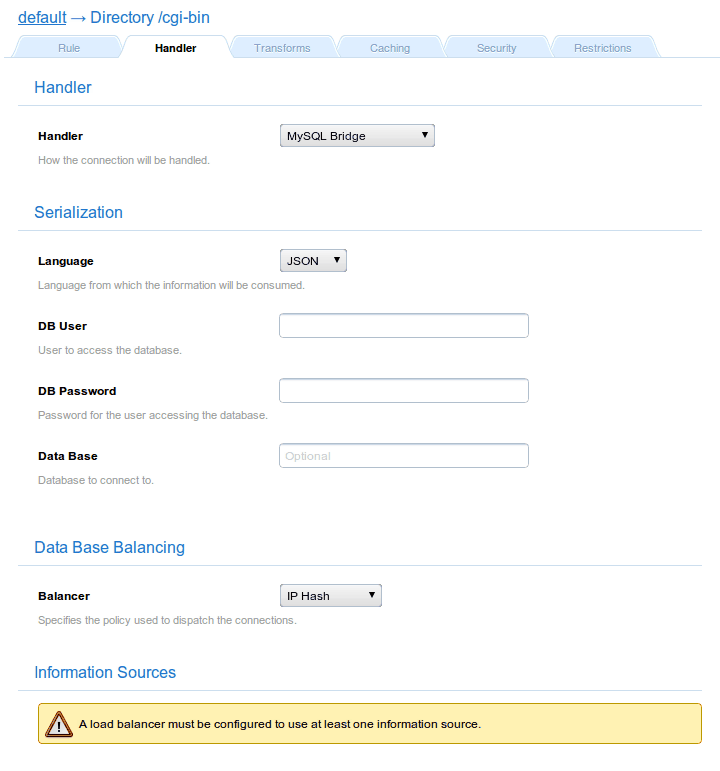
Documentation
Handler: MySQL bridge
This handler offers a lightweight database abstraction layer that will provide all the benefits of connection pooling. This in turn offers scalable advantages for high-load websites.
The original implementation of DBSlayer was a MySQL to JSON over HTTP bridge. This handler outperforms any other implementation by far, and many more advantages are derived of using the MySQL bridge, including:
-
Possibility of being proxied: imagine caching your database queries with any standard mechanism currently in place.
-
Chunked encoding: make your database connections persistent between the bridge and the database server. Experience a huge performance boost independently of your application’s design.
-
Possibility of applying any of the encoding modules provided by Cherokee: deliver your database results in gzipped format and save bandwidth.
-
More languages available: besides JSON, the handler can also return the information to be used directly by Python, Ruby and PHP.

It also makes use of a balancing strategy to manage at least one information source: the MySQL server being bridged.
Parameters
| Parameter | Description |
|---|---|
user |
The MySQL user to authenticate as. |
password |
The MySQL user password to use. |
db |
Optional. A MySQL database name. |
lang |
Language from which the information will be consumed: json | python | ruby | php |
Note that for this module to be correctly compiled, the MySQL database development files are required.
As stated above, the MySQL bridge handler is merely an abstraction layer. An excellent one at that, but that is all. No more, no less. This means you can perform regular operations on your database, but you cannot expect magic to happen. For instance, when you perform an INSERT, the Cherokee DB balancer will return a tuple indicating whether it succeeded or not, the number of rows affected, a rollback flag, etc. It will not, however, replicate the operation among each one of you MySQL servers. These arrangements must be made independently using MySQL’s specific mechanisms.
Since the handler can manage multiple SQL requests in the same instruction, a list of responses is delivered containing as many as commands were issued.
Warning: When performing multiple operations in a single call to the handler, you need to keep one very important thing in mind. Because of MySQL’s design, when an error is returned no other statements are executed. Check MySQL’s mysql_next_result() function for more details about this limitation. This is not just limited to transactions. This means you should make atomic calls to the handler if you want to determine precisely what SQL commands where performed. A multiple operation can be executed with no further issue, but if one of the group fails the rest will not be run. You will receive at least one error among the results, which is probably all what you need in case you were in the middle of a transaction or that sort of situation.
Further information about this handler can be found in the cookbook section, specifically in the recipe about setting up the MySQL balancing.
